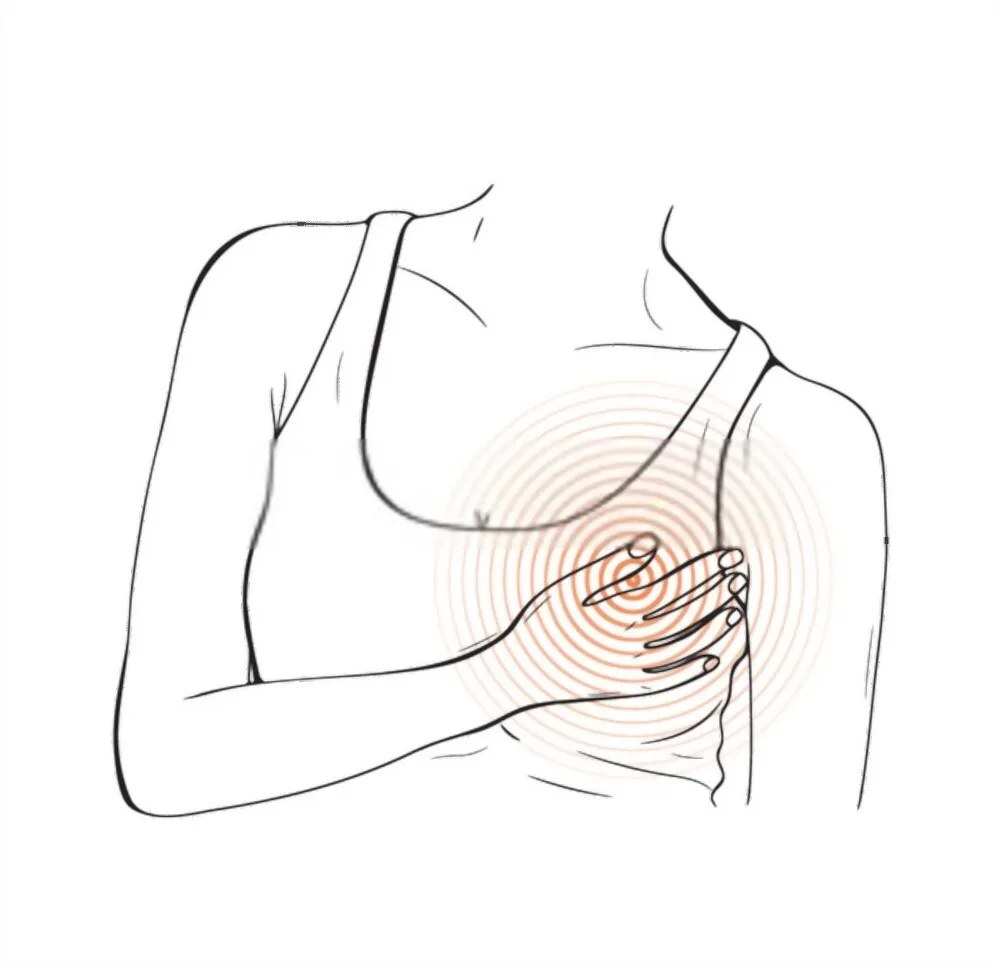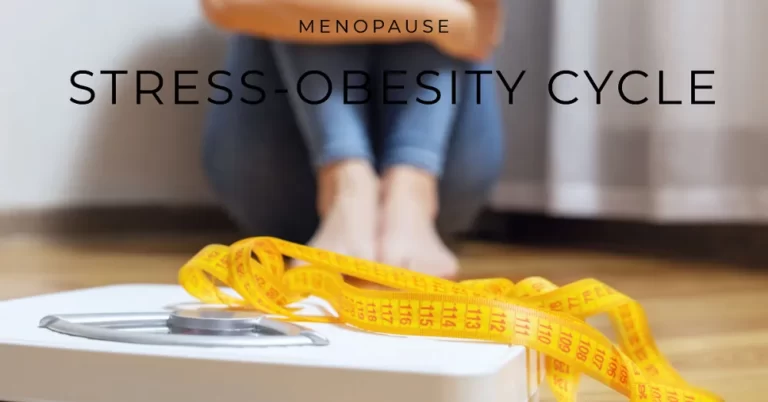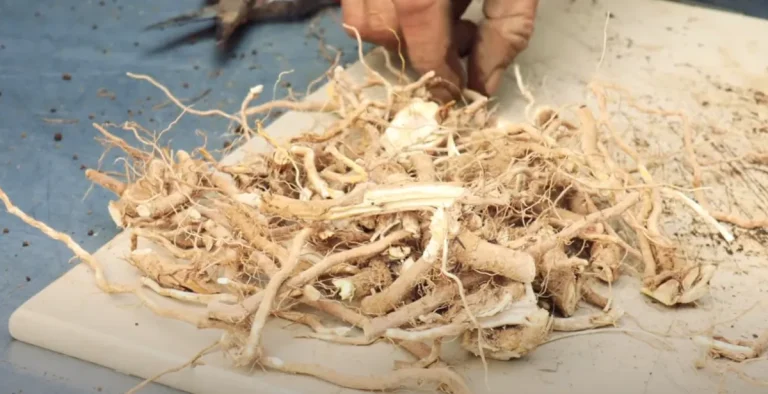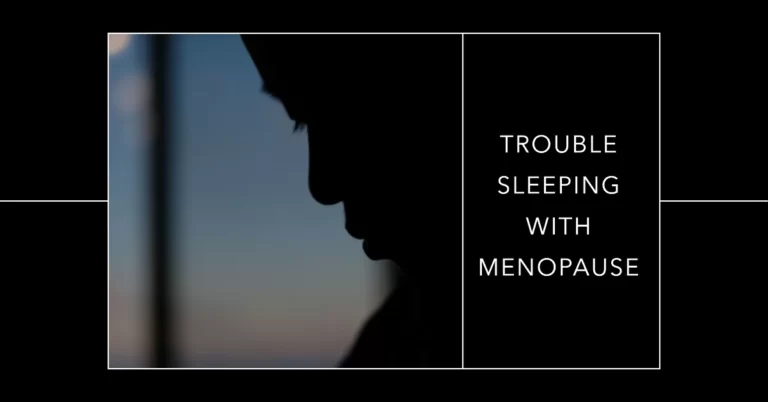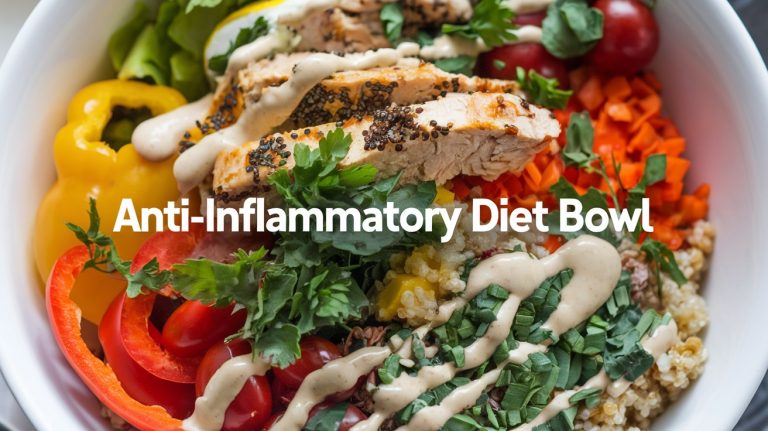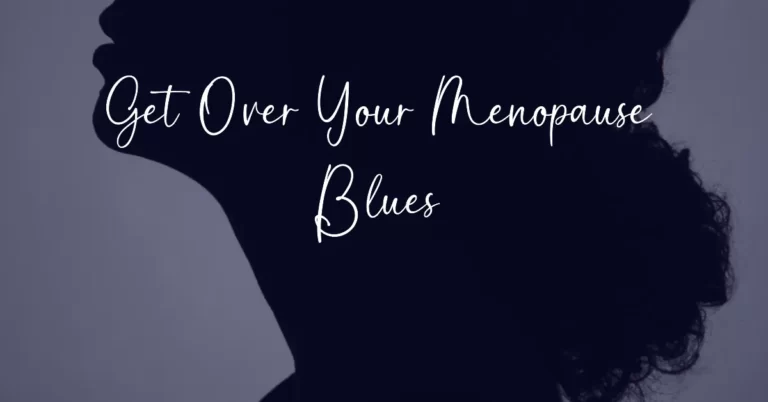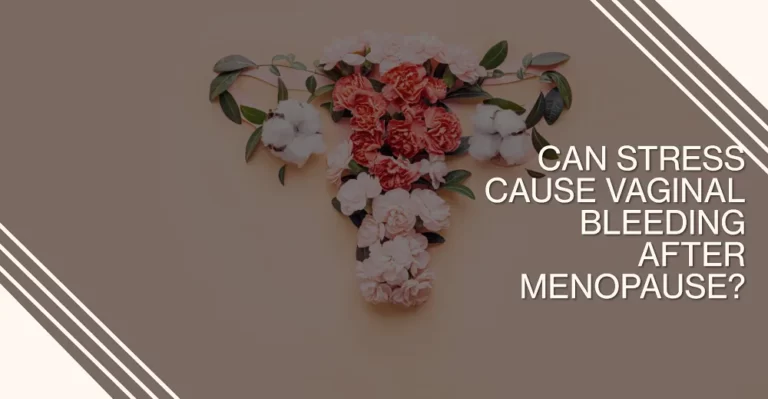Can Stress Cause Breast Pain After Menopause? Menopause Breast Pain, Spot The Signs and Find Relief
“Ouch! My boobs are killing me! Is this normal post-menopause?” Breast pain during menstruation is common, but it could be a red flag if it lingers beyond that time.
The causes of post-menopausal breast pain are not always clear, you must pay attention to your body and recognize any changes, no matter how small. Various factors, such as hormonal shifts, aging breast tissue, or medications, could be at play.
But today, we will focus on one of the most unspoken yet incredibly serious potential causes of post-menopausal breast pain: stress.
Stress is something we all experience every day and can lead to some pretty uncomfortable physical symptoms, including breast pain after menopause. When we feel stressed, our bodies essentially go into survival mode, causing our muscles, including those in our chest and back, to tighten up.
At the same time, stress hormones like cortisol and epinephrine can cause inflammation and throw off progesterone and estrogen levels, leading to breast pain that can worsen over time.
Unfortunately, these facts are often overlooked or dismissed as an inevitable part of aging. Women also usually ignore breast pain symptoms, thinking they are inconvenient.
Still, they should be proactive and seek medical attention to reduce the risk of severe health problems. Pay attention to any breast pain that persists over a few days or intensifies with time.
Hence, understanding the complicated interplay between stress and physical symptoms is essential for effectively managing breast pain after menopause. This article aims to examine possible mechanisms underlying the relationship between stress and breast pain after menopause and to suggest remedies.
Breast Pain: Types and Concerns
Breast pain, or mastalgia, is an all-too-common yet often concerning condition affecting women of all ages. This discomfort can range from mild and occasional to severe and chronic, significantly impacting a woman’s quality of life.
Women typically report breast pain as tenderness, achiness, burning, or stabbing sensations that may radiate to surrounding areas, such as the armpit or chest wall. The pain can be brought on or worsened by physical exercise, hormonal fluctuations, stressful events, or certain medications.
Types of Breast Pain:
Breast pain can be categorized into two types: cyclical and non-cyclical.
– Cyclical Breast Pain: The most common type of breast pain, also known as hormonal breast pain, is associated with menstrual cycles and is more common in younger women.
– Non-cyclical Breast Pain: This type of breast pain is not connected to a woman’s menstrual cycle and can be caused by injury, infection, or medication. Non-cyclical breast pain is unrelated to the menstrual cycle and is more prevalent in women during and after menopause.
Mastalgia can also be classified into two categories based on the location of pain:
Focal and diffuse. Focal breast pain is localized to a specific area, while diffuse pain spreads throughout the breast.
While breast pain is a concern, not all breast pain is cancerous. Consult your doctor if the pain persists, is severe, or is accompanied by other symptoms such as lumps, discharge from the nipple, changes in the skin, or fever.
Concerning Signs:
To help you make a diagnosis, familiarize yourself with common symptoms of breast pain after menopause. Common signs include:
– Unusual lumps, bumps, or thickening in the breast tissue.
– Nipple discharge or bleeding.
– Redness or swelling in the breast tissue.
– Changes in the skin texture or appearance around the breast.
– Persistent breast pain that doesn’t go away with a menstrual cycle.
Persistent breast pain can be a symptom of something more serious if it persists after menopause. The onset of new or worsening breast pain after menopause may indicate an underlying medical condition.
Any of the following symptoms should be reported to your doctor immediately:
– Pain localized to one area, particularly in the upper outer quadrant near the armpit.
– Breast pain that persists for more than three weeks.
– Pain that increases in intensity or frequency over time.
– Pain associated with other symptoms such as lumps, nipple discharge (yellow or pusy), skin changes, and fever.
Regular breast self-exams and mammograms are crucial in identifying changes or abnormalities in breast tissue. Breast pain should be taken seriously and not ignored, as early detection of any underlying medical conditions can significantly improve treatment outcomes.
Today’s Discussion: Potential Mechanisms For Stress-Induced Mastalgia After Menopause
Stress is a common problem that affects many people, especially in today’s fast-paced and high-pressure world. Many women also experience breast pain after menopause.
The question arises whether there is any connection between the two. Can stress cause breast pain after menopause?
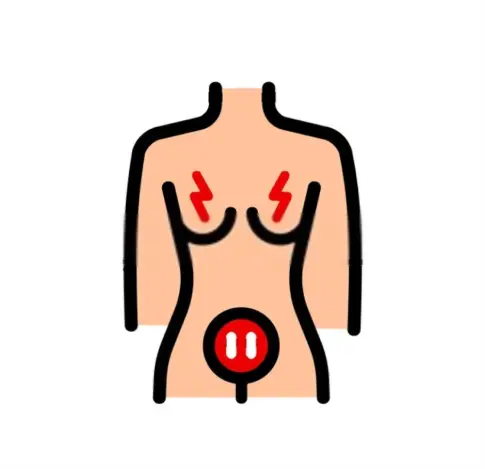
This is a complex issue and one that requires a detailed understanding of the physiological, psychological, and medical factors that are involved. Spotting the signs of stress-related breast pain can be tricky because its symptoms closely mimic other conditions.
Postmenopausal women may experience breast pain due to changes during this transition. The reduced blood flow to the breast, shrinking of milk ducts, and changes to fatty tissues can result in breast pain.
Besides these physical changes, recent studies suggest that stress may trigger breast pain. While mental and emotional stress may not be the primary cause, it can exacerbate the condition since stress influences hormone production.
Look at the potential physiological mechanisms linking stress and mastalgia after menopause.
Mechanisms:
- Chronic stress triggers the release of stress hormones like cortisol, which can activate the immune system and cause inflammation. This inflammation can manifest in various body parts, including the breast’s mammary tissue.
Recent studies have shown that chronic emotional distress can lead to increased levels of pro-inflammatory cytokines involved in the immune response. These cytokines, such as interleukin-6 (IL-6), can cause inflammation in the breast tissue, leading to tenderness, soreness, and pain.
Moreover, chronic stress can also lead to changes in the autonomic nervous system, which regulates blood flow to various organs, including the breasts. Stress can cause sympathetic nervous system activation, resulting in decreased blood flow to the breasts. Reduced blood flow further aggravates breast inflammation and pain, especially during physical movement or contact, such as during exercise.
- Breast tissue is hormone-sensitive.
Hormonal fluctuations due to stress can exacerbate breast pain, especially since menopause significantly reduces estrogen and progesterone levels. Estrogen is known to play an important role in maintaining breast tissue health; too much or too little can lead to breast pain.
During menopause, your body’s levels of estrogen and progesterone drop significantly. While stress can spike cortisol and other hormones, there could be a correlation between the hormonal fluctuations associated with menopause and the increased risk of developing breast pain.
The resulting fluctuations in estrogen and progesterone levels contribute to accelerated changes in breast tissue, such as an increase in fibrosis or a decrease in fatty tissues. This can lead to localized discomfort and pain.
- Muscle tension and pain referral are common mechanisms linking stress and breast pain after menopause. Chronic stress can cause an increase in muscle tension, leading to tenderness and soreness throughout the body. This increased tension can manifest as localized breast pain or radiating discomfort, often mistakenly attributed to other causes.
- Anxiety-induced hypersensitivity is another potential cause of stress-related breast pain. The body’s fight or flight response kicks in during intense stress, increasing awareness of physical sensations.
Anxiety and stress can cause psychological distress that leads to breast pain. Stressful events such as family arguments or major life changes can lead to intense emotions that manifest as physical symptoms in the body.
Any existing aches and pains become more apparent and acute, as does discomfort associated with menopausal changes, such as breast tenderness.
- Stress can also affect your breast health indirectly by reducing your immunity. Stress weakens the immune system, making it more difficult for your body to fight infections.
This can result in swelling, tenderness, and pain in the breasts. Some women may also experience a stabbing or burning sensation due to an infection.
Factors Other than Stress
There are numerous potential triggers for breast pain, including some that have nothing to do with stress. Stress may not always be the underlying cause of breast pain after menopause, as various causes can contribute.
If you’re experiencing persistent or severe discomfort, it’s best to consult with your doctor so they can examine and diagnose the cause of your symptoms.
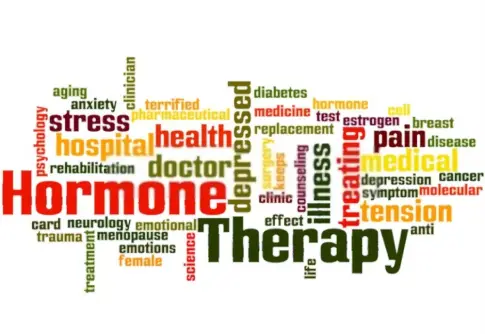
Let’s look at other factors involved in postmenopausal breast pain.
Certain Medical Conditions
For instance, the hormonal fluctuations associated with premenstrual syndrome can trigger mastalgia in some women.
Conditions such as fibrocystic breasts or cysts in the milk ducts may also be responsible for localized soreness and discomfort.
Breast cancer is another potential cause of breast pain, although it is usually accompanied by other symptoms such as lumps in the breasts or nipple discharge.
Medications Side Effects
Certain medications can affect breast tissue, leading to tenderness and pain. Such drugs include:
- Certain birth control pills
- Hormone therapy
- Chemotherapy
- Tricyclic antidepressants
- Antianxiety medications, etc.
If you’re experiencing breast pain after starting a new medication, consult with your healthcare provider to determine if the medication is the source of the pain. Please speak to your doctor about any medications you are taking to decide whether or not they could be responsible for your symptoms.
Poor Posture Habit
Bad posture can increase the risk of experiencing breast pain after menopause.
Poor posture habits, such as rounded shoulders and a hunched back, can lead to tension in the upper body, including the breast area. This increased tension and strain on the chest muscles can cause soreness, aching, or discomfort in the breasts.
Poor posture can also restrict blood flow to the breasts, leading to tenderness and pain. Incorporating stretches that target the chest muscles into your daily routine can help to reduce tension in the area, relieving breast discomfort.
Poorly Fitting Bras
Wearing an ill-fitting bra can cause a myriad of issues for your breasts. Skin irritation, tenderness, and discomfort are common symptoms of an ill-fitting bra. The bra fabric may irritate or chafe the skin in certain areas, leading to redness and soreness.
An overly tight bra can also impair blood flow, resulting in pain and discomfort.
Hormone Replacement Therapy (HRT)
HRT can also cause breast pain, particularly during the first few months of treatment. Women on hormone replacement therapy may also experience breast pain.
The hormonal changes associated with HRT can lead to tenderness, swelling, and soreness in the area.
As the body adjusts to the new levels of hormones, the symptoms should begin to subside. Tell your doctor about any potential side effects you may experience with HRT, as they can provide advice and assistance.
Age-related Changes in Breast Tissue
Age-related changes in breast tissue can lead to breast pain, including changes in breast density and the development of breast cysts. The hormonal changes accompanying menopause can also increase breast density as the fatty tissues are replaced by fibrous tissue.
This process is known as fibrosis, which can cause a sensation of heaviness in the breasts or localized tenderness. Breast cysts can also form due to age-related changes, leading to pain and tenderness.
Breast Trauma
Breast injury, surgery, or underlying medical conditions such as fibrocystic changes, infections, cysts, or tumors can be other reasons for breast pain.
Breast injury or surgery can also be a potential cause of breast pain.
When the breast tissue is damaged through physical trauma or surgical procedures, it can lead to soreness and discomfort in the area. Surgery such as mastectomy, lumpectomy, or biopsy can lead to swelling and tenderness when the tissues are healing.
Lifestyle Factors
Lifestyle factors like caffeine and alcohol intake, smoking, and inadequate sleep may also contribute to breast pain.
Consuming too much caffeine or alcohol can lead to breast tenderness, while smoking can increase the risk of breast cancer and exacerbate breast pain.
- Physical inactivity and lack of exercise can increase the risk of breast pain during menopause. Age-related health concerns, like joint pain or decreased mobility, lead to decreased physical activity levels after menopause.
A lack of physical activity can increase fatigue and stress levels and cause localized breast pain. Studies have shown that women who are physically active and exercise regularly experience less breast pain than those with sedentary lifestyles.
- Stressful life events such as divorce, job loss, illness, or death in the family can also cause psychological distress that manifests as physical symptoms such as breast pain.
Dehydration
Not drinking enough water can lead to localized tenderness or aching in the breast tissue. Dehydration can also cause fatigue and increased stress levels, which may contribute to breast pain.
Staying hydrated throughout the day is essential to keep your body functioning at its best. Aim for eight glasses of water daily or more if you’re physically active.
Vitamin Deficiencies
Inadequate nutrient intake, such as vitamin E, can result in breast pain during menopause. Vitamin E is essential for healthy tissue and can help reduce breast pain symptoms.
Exploring the Diagnosis and Treatments for Stress-Related Sore Breast Issues
The impact of chronic emotional distress on breast health must be acknowledged and medical attention should be sought. A range of interventions, including stress-reducing techniques like meditation, mindfulness, and cognitive-behavioral therapy (CBT), can help manage pain and inflammation in the breasts.
A medical professional can help determine whether the cause of your symptoms is stress-related or due to some other underlying issue. Once your doctor has determined the source of the problem, they can advise the best course of action for finding relief.
Treatment may involve OTC (Over-the-counter pills), lifestyle modifications such as stress reduction techniques, exercise, and dietary changes. Your doctor may also prescribe antidepressants or anti-anxiety drugs to help relieve your symptoms.
If the pain is due to physical issues such as breast cysts or fibrocystic breasts, your doctor may recommend further testing or treatment, such as hormone therapy, medications, or surgery.
Perfect Natural Strategies to Counter the Stress-Related Post-Menopause Mastalgia

Stress-related breast pain can be alleviated naturally and with medical treatments. Take a look at these tips:
Warm Cozy Compresses
Applying a warm, cozy compress to the breast area can help relieve tenderness and discomfort. The moist heat provided by the compress helps improve circulation, relax tense muscles, and reduce swelling, targeting the source of the pain.
Soak a towel in hot water and wring it out until it’s damp. Then, drape the towel over your breasts and let it sit as long as it’s comfortable.
Lie down in a comfortable position and focus on your breath as you listen to the music, allowing yourself to drift away for 10-15 minutes. You can repeat this process several times throughout the day until you feel relief.
Try Relaxation Techniques
Meditation and yoga are two powerful relaxation techniques that can help reduce stress. They both involve breathing exercises and gentle movements that promote calm and relaxation.
Meditation has been shown to reduce symptoms of anxiety and depression, while yoga has been shown to reduce inflammation in the body. Adopting stress-reduction techniques such as mindfulness meditation, deep breathing exercises, or progressive muscle relaxation can help to reduce stress levels and physical tension in the body.
Cognitive Behavioral Therapy (CBT)
CBT is a type of therapy that can help individuals manage stress by changing negative thought patterns and behaviors. It can benefit individuals who experience anxiety or depression, as it teaches coping mechanisms to deal with stressful situations.
Adopting a Healthy Lifestyle

Focus on healthy lifestyle changes that can help you reduce stress and feel better.
Exercise as a Stress Reducer and Mood Booster
When we engage in physical activity, our brain releases many chemicals that make us feel good. One of these chemicals is endorphins, the body’s natural painkillers.
They function similarly to opioids, but endorphins are completely safe and non-addictive, unlike drugs. Endorphins interact with the same receptors in the brain that opioids do, which results in a reduction of pain and a boost in mood.
Chronic stress can lead to an overproduction of cortisol, which can cause a wide range of health problems, including anxiety, depression, weight gain, and high blood pressure. Physical activity helps to reduce the amount of cortisol in our bodies, which in turn can alleviate symptoms of stress.
Exercise also produces mood-enhancing brain chemicals like dopamine and serotonin, which can help reduce symptoms of depression and anxiety. Research has shown that even low-to-moderate physical activity levels can significantly impact our overall mood and stress levels.
For example, a study published in the Journal of Psychiatric Research found that just 30 minutes of moderate-intensity exercise, like brisk walking or cycling, three times a week can improve symptoms of depression and anxiety. Another study published in the Journal of Sport and Exercise Psychology found that participating in a group exercise can significantly reduce feelings of stress and increase feelings of camaraderie and social support.
It doesn’t matter what type of physical activity you choose, whether running, cycling, or doing yoga, as long as you enjoy it and it increases your heart rate. Aim for at least 30 minutes of exercise five times a week, and you’ll start reaping the benefits quickly.
Incorporate weight-bearing exercises, such as lifting dumbbells or doing push-ups, to build muscle mass and boost metabolism.
Dietary Adjustments
Certain foods, such as caffeine and alcohol, can exacerbate symptoms of breast pain. The mechanism behind how certain foods can aggravate stress-related breast pain involves the effect these substances have on inflammation and hormonal balance in the body.
Caffeine, found in coffee, tea, and chocolate, can stimulate the production of stress hormones such as cortisol, which increase inflammation in the body. Inflammation can lead to breast pain, especially in women with fibrocystic breast disease. In addition, caffeine can cause blood vessels in the breast tissue to constrict, leading to discomfort and pain.
Alcohol, on the other hand, can disrupt hormonal balance in the body. It can increase the production of estrogen, which can exacerbate symptoms of breast pain. Alcohol can also lead to dehydration, which can cause breast tissue to become tender and painful.
To alleviate stress-related breast pain, it is recommended to limit or eliminate the consumption of caffeine and alcohol. Instead, opt for a diet rich in anti-inflammatory foods such as fruits, vegetables, and whole grains. These foods contain antioxidants and phytochemicals that can reduce inflammation and alleviate pain.
In addition to dietary adjustments, it is vital to stay hydrated by drinking plenty of water. Being adequately hydrated can help to reduce breast pain and discomfort.
Recent studies have also shown that reducing the intake of animal products and increasing the consumption of plant-based foods can positively affect breast pain. Plant-based foods are rich in nutrients that help to reduce inflammation and balance hormone levels in the body.
We have posted some previous blogs on diet and its role in managing menopause symptoms. Please take a look if you deem it necessary.
Maintaining a Healthy Weight
When women are overweight, the extra weight puts additional pressure on the breasts, exacerbating the pain and discomfort associated with post-menopause mastalgia. This is because the breasts contain fatty tissue, which can become compressed and inflamed under too much pressure.
Maintaining a healthy weight can help reduce this pressure by ensuring the breasts are not carrying any excess weight. Women can reduce their overall body weight and fat percentage by adopting a healthy diet and exercise regime.
This, in turn, can help relieve post-menopause mastalgia symptoms. Women who maintain a healthy weight are less likely to experience post-menopause breast pain.
Sleep Well
Getting adequate sleep is essential for managing stress and alleviating symptoms of breast pain. Aim for 7-9 hours of restful sleep each night.
Make sure your bedroom is comfortable temperature, dark, and quiet to help promote restful sleep. Take a warm bath or shower before bed to help relax your body and mind and relief the sores.
Avoid looking at screens (phone, laptop, tablet) for an hour before going to sleep; the blue light emitted from these devices can interfere with our natural sleep-wake cycle.
Practice Good Posture
Poor posture can cause a misalignment of the spine, leading to tension and discomfort in the chest area. Proper posture helps keep your body aligned and reduces unnecessary strain on breast tissue.
Try to maintain an upright position with your shoulders back and head up when you’re standing or sitting for long periods.
Supportive Bra
Various reasons, such as inflammation, tension, or pressure on the breast tissue, can cause pain. However, investing in a supportive bra can effectively reduce the discomfort and pain caused by post-menopause mastalgia.
Here’s how:
- Providing Proper Support: Wearing a supportive bra provides the necessary support to the breasts and helps distribute their weight evenly. This reduces the pressure placed on the breast tissue and minimizes the movement of the breasts, which can lead to further discomfort.
- Reducing Friction: A well-fitting bra reduces the amount of friction between the breasts and clothing, which can cause additional pain. During exercise, a supportive bra can help prevent excessive movement of the breasts, minimizing the pain caused by jarring movements.
- Preventing Inflammation: A well-fitting bra prevents the breasts from rubbing against each other or against clothing, which can cause inflammation leading to mastalgia. Moreover, a supportive bra reduces the tension and pressure on the breast tissue, which may prevent further inflammation.
Be sure to choose a properly fitting bra with quality materials that don’t irritate your skin.
Supplements
Certain supplements can also help reduce stress-related breast pain. For example:
NuviaLab Meno: NuviaLab Meno is a supplement designed to reduce menopausal symptoms. It contains natural ingredients such as vitamin E, black cohosh, and dong quai that may benefit breast health and reduce pain.
NuviaLab Relax: NuviaLab Relax is a supplement that helps to reduce stress and anxiety. It contains natural ingredients such as ashwagandha, lemon balm, and magnesium that may help to calm the body and mind.
Fat Burn Active: Fat Burn Active is a supplement that helps to reduce fat and improve overall health. It contains natural ingredients such as green tea extract, chromium picolinate, and guarana, which may help to reduce breast pain caused by being overweight or obese.
Vitamins: Certain vitamins, such as vitamin B6, calcium, magnesium, and zinc, effectively reduce symptoms of breast pain. Vitamin D helps regulate calcium levels in the body, which is important for maintaining healthy bones and breast tissue.
Fish Oil: Omega-3 fatty acids found in fish oil have anti-inflammatory properties that may help to reduce breast tenderness. Omega-3 fatty acids can reduce inflammation and balance hormones, alleviating pain.
Herbal Remedies: Herbal remedies like chaste berries, evening primrose oil, and dong quai can also help to regulate hormones and reduce inflammation.
However, it is important to consult your doctor before taking any supplements as they may interact with your other medications.
Importance of Regular Check-ups and Self-examination
A regular checkup and breast self-examination are important for women. In this way, any breast changes can be detected early, allowing for prompt medical attention.
Check-ups can also help detect post-menopause breast tenderness early, so you can start treating it.
A. Routine Breast Self-Examinations
Performing breast self-examinations is crucial in detecting any abnormalities or changes in the breast tissue. It is recommended that women perform self-examinations once a month, ideally a few days after their menstrual cycle.
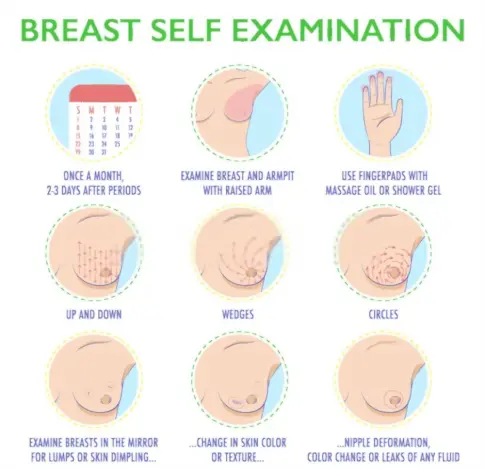
Here’s a step-by-step guide on how to perform a breast self-exam:
- Begin by looking at your breasts in the mirror with your hands on your hips. Check for any changes in size, shape, or skin texture.
- Raise your arms and look for the same changes as step one.
- Lie down and use your right hand to feel your left breast and vice versa. Use the pads of your three middle fingers to feel for lumps or thickening.
- Move your fingers in a circular motion, covering the entire breast. Pay attention to the area under the armpit and around the nipple.
- Stand up and repeat step one. Lastly, gently squeeze each nipple to check for any discharge.
B. Regular Mammograms and other Diagnostic Procedures
While routine breast self-examinations are important, remember that not all cancers can be felt through self-exams. Regular mammograms and other diagnostic procedures are necessary to detect abnormalities that may not be found through self-exams.
Mammograms are the most effective way of detecting breast cancer early. It is recommended that women over the age of 40 get a mammogram every one to two years. Here are a few things to keep in mind when scheduling your mammogram:
- Avoid scheduling your mammogram during your menstrual cycle, as breast tenderness and swelling can make the exam uncomfortable.
- Inform your doctor of any breast changes or abnormalities you’ve noticed.
- If you’ve had mammograms done before, bring your records to the appointment.
In addition to mammograms, your doctor may recommend other diagnostic procedures, such as ultrasounds or MRIs, depending on your medical history.
C. Distinguishing Between Normal and Abnormal Breast Pain
Breast pain is common and is often caused by hormonal changes. However, knowing the difference between normal breast pain and pain that could indicate something more serious is important.
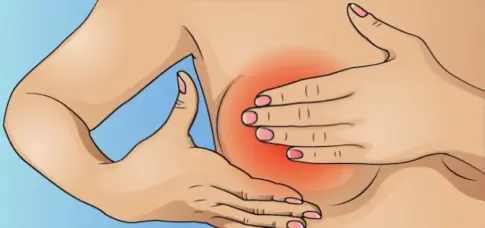
Here are a few things to keep in mind:
- Breast pain that feels dull or sore in both breasts is considered normal. However, if you experience pain only on one side, along with a lump, redness, or swelling, it could be a sign of something more serious like an infection, cyst, or breast cancer.
- Don’t hesitate to schedule an appointment with your doctor if you notice persistent breast pain, unusual changes, or skin discolorations.
- To help your doctor, note when and how often you experience the pain, what it feels like (sharp, burning, or aching) if it comes and goes or is steady, and what makes it worse or better.
Remember, early detection is key in treating and preventing breast cancer. Don’t forget to schedule regular check-ups and perform routine self-exams to keep your breasts healthy.
Menopause breast pain: what does it feel like?
Breast pain is a common symptom experienced by many women during perimenopause and menopause. The pain can vary from mild discomfort to severe soreness, tenderness, and burning.
Menopause breast pain can be bilateral or unilateral, affecting one or both breasts. It may occur intermittently or regularly, lasting anywhere from a few days to several months.
The pain is often described as burning, aching, stabbing, or shooting and may radiate to the armpit, shoulder, or upper arm. Some women may also experience a feeling of swelling or heaviness in their breasts.
How does cancerous breast pain feel?
Not everyone who has breast cancer experiences pain. Many people with early-stage breast cancer have no symptoms at all.
For those who do experience pain, it can vary in sensation, intensity, and location. Some may describe the pain as a dull ache or pressure that doesn’t go away, while others may feel a shooting or stabbing pain.
The pain can also occur in different parts of the breast, including the nipple/areola area, the upper, outer portion of the breast, and the armpit area.
Remembering breast pain alone is not a definitive sign of breast cancer is crucial. Other common causes of breast pain include hormonal changes, cysts, and injury or trauma to the breast.
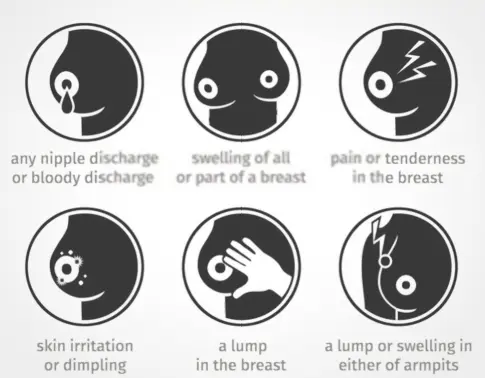
If you are experiencing breast pain or any other unusual symptoms, it is essential to consult with a healthcare provider immediately. A trained professional can help determine the root cause of your pain and develop an appropriate treatment plan.
Be in Control of Your Breast Pain Post-Menopause
Breast pain after menopause can be an uncomfortable and disruptive symptom, but it’s important to remember that you are not alone. Many women experience breast pain due to various factors, but stress as a culprit is often overlooked.
Understanding your breast pain’s potential causes can help you find the best treatment plan. Medical treatments and medications can be helpful, but you can also manage your symptoms with natural strategies.
Personally affected by breast cancer (RIP, mom), I’ve researched and learned how stress plays a huge role in it. I’d love to hear your thoughts, personal experiences, and any questions you may have on this topic.
Feel free to drop a comment below. It will be much appreciated.
Let’s support each other through this.

